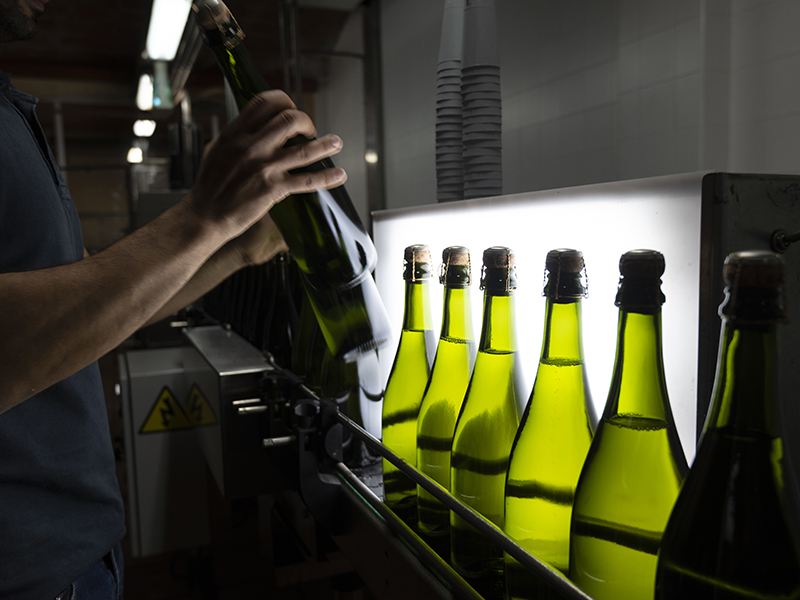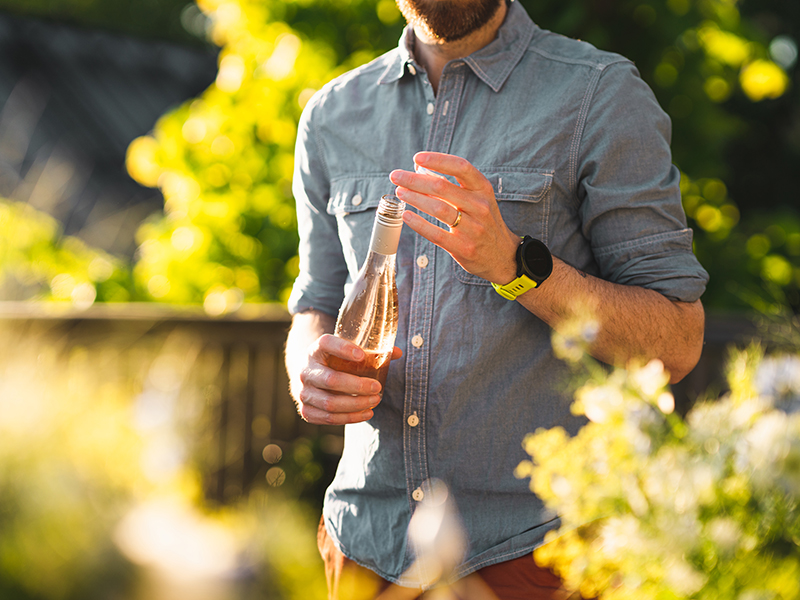3 Reasons Why Wine Corks Are Making a Welcome Comeback
Every wine lover knows the disappointment of a “corked” vintage—here’s how the makers of traditional corks are aiming to eradicate cork taint, and why this sustainable stopper is the way to go
Every wine lover knows the disappointment of a “corked” vintage—here’s how the makers of traditional corks are aiming to eradicate cork taint, and why this sustainable stopper is the way to go
Whether you’re buying wine from an auction house, a store, or direct from the producer, there’s always a chance that the wine you’ve just spent money on could be undrinkable. “Cork taint is an issue that affects wine corks from all quality profiles, wines from $40 to $40,000 per bottle,” says Chris Munro, Christie’s Head of Wine Department, Americas. “No wine is immune. Most buyers accept that it could be an issue, but it’s frustrating, and it would be great to see an end to it.”
But what’s behind that disappointing moment you open a bottle and smell damp cardboard rather than plush fruits? It’s most likely cork taint or TCA (2,4,6-trichloroanisole), a chemical compound so strong that even the smallest amount (just a few nanograms per liter) can cause unpleasant aromas and flavors of must and mold. TCA mostly occurs in natural corks, and is where we get the term “corked wine”—though this is somewhat misleading, as TCA can also occur earlier, in the winery, and as a result wines with synthetic, plastic, or metal bottle stoppers can also be “corked.”

There is evidence of cork being used to seal wine bottles as far back as ancient Greek and Roman times, but the material came into popular usage in the 18th century, along with the first user-friendly corkscrew. In the 1960s, cork fell out of favor because of its association with cork taint, and a range of alternative stoppers became available.
Today, there are several options for winemakers to use, and most are more cost-effective than cork. They include plastic and aluminum screw caps—at first viewed with suspicion by wine connoisseurs—synthetic and composite cork, as well as glass and crown caps.
Cork is an expensive bottle stopper, especially when factoring in shipping costs outside of the Mediterranean, where it is produced in Portugal and Spain. For many winemakers in Australia and New Zealand, screw-cap closures offer a more cost-effective model and, yet, cork is still associated with high-quality wines.

“It has long been argued that a cork closure aids the aging of high-quality wine,” says Munro. “A cork allows a tiny amount of oxygen into the bottle, which in turn allows a wine to age gracefully and for the flavors to develop naturally. There has been some experimentation with different closures over the years, but many of the world’s greatest producers have stuck with cork. There’s a certain ceremony involved in pulling a cork from a bottle and, of course, with champagne that’s even more exciting.”
At Château Smith Haut Lafitte, an organic estate in Bordeaux, France, all bottles are stoppered with cork because its winemakers believe the quality is simply better than the market alternatives. The château’s oenologist, agricultural engineer, and managing director, Fabien Teitgen, explains that while screw tops are mostly OK for the white, rosé, and red wines that are typically drunk young, others need cork stoppers to help them age well. “We know the limit of cork as a natural product, but for our wines, which can be aged for 20–25 years, there is no better solution,” says Teitgen.

Today, thanks to technological developments in cork testing, corked wine could soon become a problem of the past. In Portugal, the world’s largest producer of cork stoppers, Corticeira Amorim, was the first to roll out a technology that assesses each cork bottle stopper and removes any traces of TCA. Corticeira Amorim is confident that its patented NDtech system can eradicate TCA in its products by the end of 2020, the company’s 150th anniversary year.
“TCA can be found everywhere, but cork bore the brunt of the negative press,” says António Rios de Amorim, the company’s chairman and CEO. “We wanted to create this technology to restore people’s confidence in cork. It’s more environmentally friendly than plastic closures, and we are glad to see winemakers around the world using it more and more.”

“Cork and wine have been allies for centuries, precisely because they are both natural and can be harvested without damaging the vine or tree,” says Amorim. “They preserve vital habitats, local populations, and biodiversity.” Furthermore, a recent study commissioned by the company found that a single natural cork stopper can offset the carbon footprint of a standard 75cl bottle of wine.
“I see more and more new wines with cork closures, especially in the organic wine movement,” says Munro. “A cork tree regenerates and is more ecologically friendly than a manufactured seal.”
Since Corticeira Amorim developed its technology, other companies have adopted similar models, and winemakers such as Teitgen are positive about the results. “One way we can try to control things is to buy the best quality cork there is,” he says. “Another is to seek out a company that uses this new technology. It’s been a revolution for the winemaking business.”
Finca La Perla in Mendoza, Argentina
This incredible estate, on the market with ReMind Group S.A., delivers an opportunity to pursue high-end viticulture amid awe-inspiring surroundings. With almost 320 acres (129 ha), the compound encompasses 222 acres (90 ha) dedicated to winemaking, as well as olive groves, living areas, and equestrian facilities. Thoughtful architecture creates distinct spaces, and ensures a seamless connection with nature.
Coastal Paradise on the Sorrento Peninsula, Italy
Archaeologically important, this stunning estate covers 42 acres (17.3 ha) of prime wine and olive oil-producing countryside and is available through Agenzia Romolini Immobiliare S.r.l. The palatial nine-bedroom home, a museum, a chapel, a beachfront club with open-air restaurant, a business center, and a vast range of guest accommodation seamlessly integrate the estate’s history with modern amenities.
Banner image: Getty Images